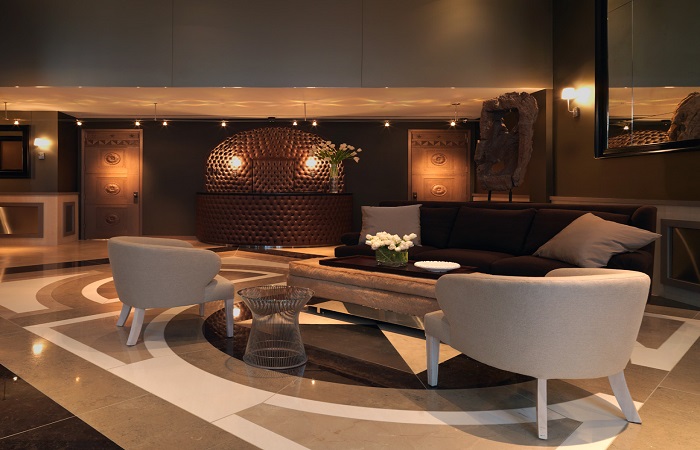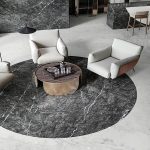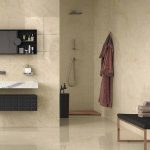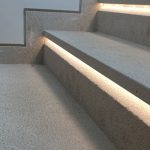Natural Stone as a Green Building Material

Natural Stone as a Green Building Material and Seven Reasons to Use it
Green building material has an vital role in twenty-first century construction market. Natural Stone is mother natures’ original green building material. If you made your decision to select natural stone, you are considered environmentally friendly person. The stone industry had been green extremely seriously.
Natural stone is created by forces of nature. The good point is that, natural stone flooring and countertops will not need to be replaced for a long time. They are are 100% recyclable. Furthermore, they do not emit VOCs into your home. They can also be cleaned with Ph-neutral dish detergent. After all, what can be greener than a product that comes directly from the earth?
CO2 Emissions in Natural Stone
Reducing energy demand and CO2 emissions is more important now than ever. As we know, the construction industry makes a major contribution to global CO2 emissions and energy consumption. Consequently, construction products should have the lowest possible environmental impact.
German Researches made a comparison between different flooring materials. It became clear that natural stone is by far more sustainable than other materials. So it’s no coincidence that people and companies involved in natural stone industry, have a vision. This visions slogan is “A more sustainable, beautiful world”.
No Material is More Sustainable Than Natural Stone
The study “Nachhaltigkeitsstudie – Ökobilanz von Bodenbelägen“ named Sustainability study – Life-cycle Assessment of Floor Coverings made by Deutscher Naturwerkstein-Verband e.V. (DNV) is a scientifically based compilation of data which assesses the ecological repercussions of using natural stone, large ceramic tile, PVC, laminate, and hardwood flooring.
The ecological impact of a load-bearing structure comprising a concrete base was studied in a life-cycle screening procedure that spans 50 years of use for public surfaces with high traffic. The study concludes that the costs of energy consumption for processing natural stone are a mere 3.3 percent of the production value. A comparison of all floor coverings showed that those produced from natural stone cause a significantly lower environmental impact in their production, installation, and use than large-format ceramics, PVC, laminates, and hardwood flooring.
Lowest Global Warming Potential
In the category of global warming potential (GWP) impact, the production and utilization of floor coverings using natural stone tiles, display significantly lower CO2 equivalents than the production and use of other covering materials. At 10.9 kilograms CO2 equivalent, the lowest emissions are attributed to the GWP of natural stone tiles. The GWP of carpet is with a value of approx. 223 kilograms CO2 equivalent, more than 20 times higher than for natural stone tile.
Better Than Other Slabs
When investigating coverings used for the highest performance floors, it was found that equivalence values for natural stone slabs are lower in all impact categories compared with terrazzo tiles. For example, the GWP of a natural stone slab is about 27% lower than that of a terrazzo tile and about 74% less than that of large-format ceramics.
Local Stone Is Better
The influence of transport is another important aspect. While only 0.16 kilograms CO2 equivalent is produced using local natural stone (100 km lorry transport), this increases to 3.2 kilograms CO2 equivalent in the case of transport within Europe (2000 km lorry transport) and 7.9 kilograms CO2 equivalent per square meter of flooring for natural stone from China (18 600 km by ship, 150 km by lorry and 200 km rail transport)
Why should I build with Stone?
The question that people usually ask is that why should I build with stone. It is a question often asked by architects as well as developers. There are certainly hundreds of reasons and examples we can provide, but in the spirit of the ever-popular seven lists, we will offer seven good reasons to make stone a natural choice.
Natural Stone Is Environmentally Compatible
As discussed previously, natural stone as a building material contains no pollutants that are damaging to health. Natural stone can be safely used in food areas. It is incombustible and it is also a Class A building material. Natural stone also releases no substances that are hazardous to health in case of fire. It also requires no auxiliary chemical substances such as protective coatings, impregnating agents or coatings before it can be used as a building material.
Fascination of Natural Stone
Natural stone is a natural product whose individual properties are determined by the type and bonding of the minerals comprising the natural stone. This type of stone holds an outstanding position among all building materials: components of natural stone are unique specimens that can be combined with each other and with any other materials. Natural stone is no uniform industrial product. It shows the history of its origin.
Natural Stone Is Truly Ecological
Natural stone as a building material is found in nature in a virtually finished form. No energy is needed for its actual manufacture. Energy is only consumed for quarrying and processing, but the share is small when compared to other building materials. The stone is extracted mostly from relatively small quarries without major blasting operations. The unused stone waste can be used directly for filling in the parts of the quarry where stone has been extracted or for other practical uses. Nothing is lost in the complete cycle of natural stone quarrying, processing and the return to nature.
Natural Stone Ages Perfectly Well
Whereas many building materials become unsightly over the course of many years, natural stone retains a natural patina, which is not detrimental to its beauty. Many natural stones are like vinegar. They only attain their full elegance with advancing years. Natural stone can also be cleaned easily and inexpensively. Even centuries-old floor coverings can be ground, polished, and restored to their natural condition. The lifetime of natural stone is extremely long. With the right planning and construction, buildings of natural stone have been known to survive for many thousands of years.
Natural Stone Enjoys Variety
No other building material has as many different colors and structures as natural stone. Various surface finishing processes make variety just about unlimited. Developers and architects therefore have a broad spectrum of choice, which allows matching to any desired appearance or ambience. Natural stones are often chosen for their good visual and technical qualities. Natural stone is available in a variety of different colors, structures and textures. A suitable natural stone is available for about any requirement imposed on a building material.
Natural Stone Is Attractively Priced
Considering pricing, if the total cost of a building material is considered over a useful life of 30 years or more, independent investigators show that natural stone is no more expensive than comparable synthetic building materials. The relatively high investment costs are offset by the low long-term maintenance costs and long life. The cost of cleaning and maintenance of natural stone is low.
Natural Stone Is Durable
The high-pressure resistance values of many natural stones have given the material a reputation of being an everlasting material. Natural stone is also the most durable material with the lowest abrasion values for floor coverings. Coverings of granite or similar hard stones show hardly any signs of wear even after decades of use.
Natural Stone Is Physically Practical
And finally, the studies show that natural stone has very good thermal conductivity and large heat storage capacity. Natural stone as a façade material absorbs the heat radiated by the sun and prevents unwanted heating up the building. Tests show an energy requirement of 100 – 150 kWh/m2 for multi-story buildings with stone facades, in contrast to an energy requirement of 300 – 700 kWh/m2 for the necessary heating and cooling of glass facades.
Dear reader, if you enjoyed the articles on marble and natural stone, stay with us. We would love to share more on this and many similar topics.
To learn more about us, click here.
Send your price quotes directly to our WhatsApp through this Link: https://wa.link/ord5k8
Sources
https://www.scandinavianstone.com/why-is-natural-stone-more-sustainable-than-other-materials/
https://www.naturalstoneinstitute.org/consumers/sustainable-natural-stone/
https://sturgismaterials.com/10-reasons-to-use-natural-stone/
- Back To Articles
- durability of natural stone, durable building material, Ecological, environmental building material, fascinating, fascinating buiding material, green building material, green material, low global warming, natural stone, natural stone advantages, natural stone benefits, natural stone highlights, natural stone merits, natural stones cons, natural stones pros, reasons to use natural stone, sustainable, sustainable building material
Article
Natural Stone Applications
- 22 December 2022
Iranian Stones Introduction According to Source and Quarry
- 21 December 2022
Technical Stone Introduction and Quarrying Procedures
- 21 December 2022
Categories
- blog757
- news1
- Specialized articles756













